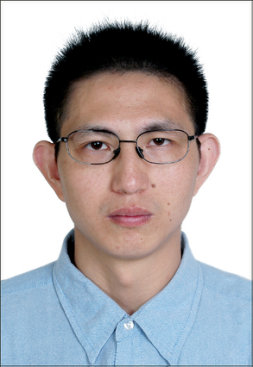Wang Weijun(W. Wang)
Email: wjwang@ief.ac.cn
Tel: (8610)-88015674
Education:
B. Sc. Geophysics, China University of Geoscience, Wuhan(1994)
M. Sc. Seismology, Center for Analysis and Prediction, China Seismological Bureau, Beijing (1997)
Ph. D. Seismology, University of Science and Technology of China, Hefei(2012)
Employment:
Assistant Professor, Center for Analysis and Prediction, China Seismological Bureau, Beijing (1997~2001,2003-2004)
Senior Software Engineer, Screening Imaging technology, Inc., Huston, U.S.A. (2002)
Associate Professor, Professor, Institute of Earthquake Forecasting, China Earthquake Administration,Beijing (2005-2016; 2017~ )
Positions Held:
Vice Director, Research Division of New Technology Application for Earthquake Forecasting, Institute of Earthquake Forecasting, China Earthquake Administration,Beijing (2020~)
Vice Director, Research Division of Seismology, Institute of Earthquake Forecasting, China Earthquake Administration,Beijing (2013~2020)
Professional Service:
Editorial Committee, Earthquake, Chinese Edition, Beijing
Selected Publications:
Wang, W., Zhou, Q., Kou, H., Liu, G., Zhu, H., & Yan, K. (2019). Improving Airgun Signal Detection with Small-Aperture Seismic Array in Yunnan. Earthquake Research in China, 33(2), 248–264.
Yan Kun, Wang Wei-Jun, Wang Qiong, Yang Feng, Liu Ning, Kou Hua-dong. Discussion on the Seismicity and Seismogenic Structure in Fold-and-thrust Belt of Northern Tianshan Mountains. EARTHQUAKE, 2019, 39(3): 43-60.
Wang, Weijun, Meng, X., Peng, Z., Chen, Q.-F., & Liu, N. (2015). Increasing background seismicity and dynamic triggering behaviors with nearby mining activities around Fangshan Pluton in Beijing, China. Journal of Geophysical Research: Solid Earth, 120(8), 2015JB012235. https://doi.org/10.1002/2015JB012235
Xu Hongwei, Wang Weijun. (2015). SEM Numerical Simulation of Vertical and Inclined Fault Zone Trapped Waves and Comparison of Their Wave Fields. Earthquake Research in China, (02).
Wang, Weijun, Chen, Q.-F., Qi, C., Tan, Y., Zhang, X., & Zhou, Q. (2011). The feasibilities and limitations to explore the near-surface structure with microtremor HVSR method—A case in baoding area of Hebei Province, China. Chinese Journal of Geophysics, 54(7), 1783–1797. https://doi.org/10.3969/j.issn.0001-5733.2011.07.012
Weijun, W., Lanbo, L., Qifu, C., & Jie, Z. (2009). Applications of microtremor H/V spectral ratio and array techniques in assessing the site effect and near surface velocity structure. Chinese Journal of Geophysics, 52(6), 1515–1525. https://doi.org/10.3969/j.issn.0001-5733.2009.06.013
Wang, Weijun, Liu, L., Chen, Q., & Eric, R. (2008). Site Responses And Sediment Structures Along The NW And NE Profiles In Beijing Area Revealed By Microtremor H/V Spectral Ratio Studies. Presented at the The 14th World Conference on Earthquake Engineering, Beijing.
Wang W.-J., Chen L., Chen Q.-F., & Liu J. (2007). Velocity and Attenuation Structures in the Focal Area of 2003 Dayao Earthquakes. Chinese Journal of Geophysics, 50(3), 686–696. https://doi.org/10.1002/cjg2.1082
Weijun, W., Jie, L., & Ling, C. (2006). Characteristics of coda wave attenuation in Yunnan area. Acta Seismologica Sinica, 19(1), 8–19. https://doi.org/10.1007/s11589-001-0008-4





